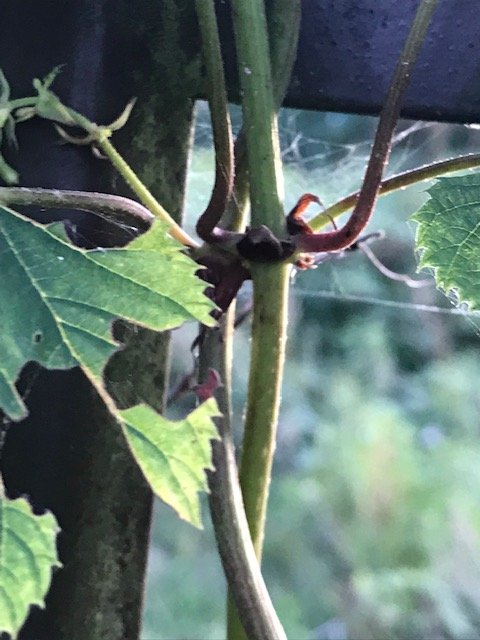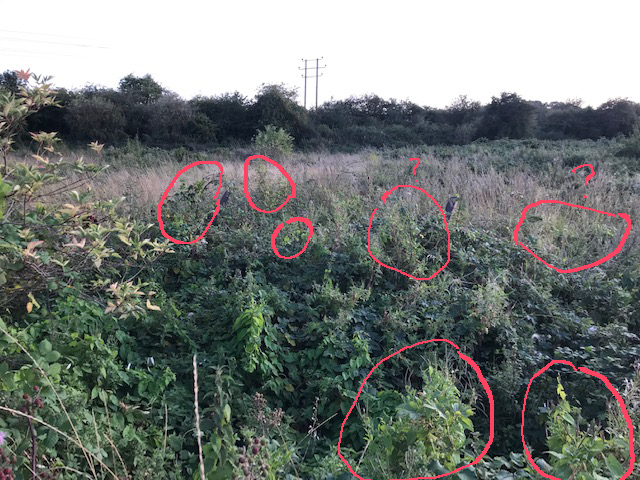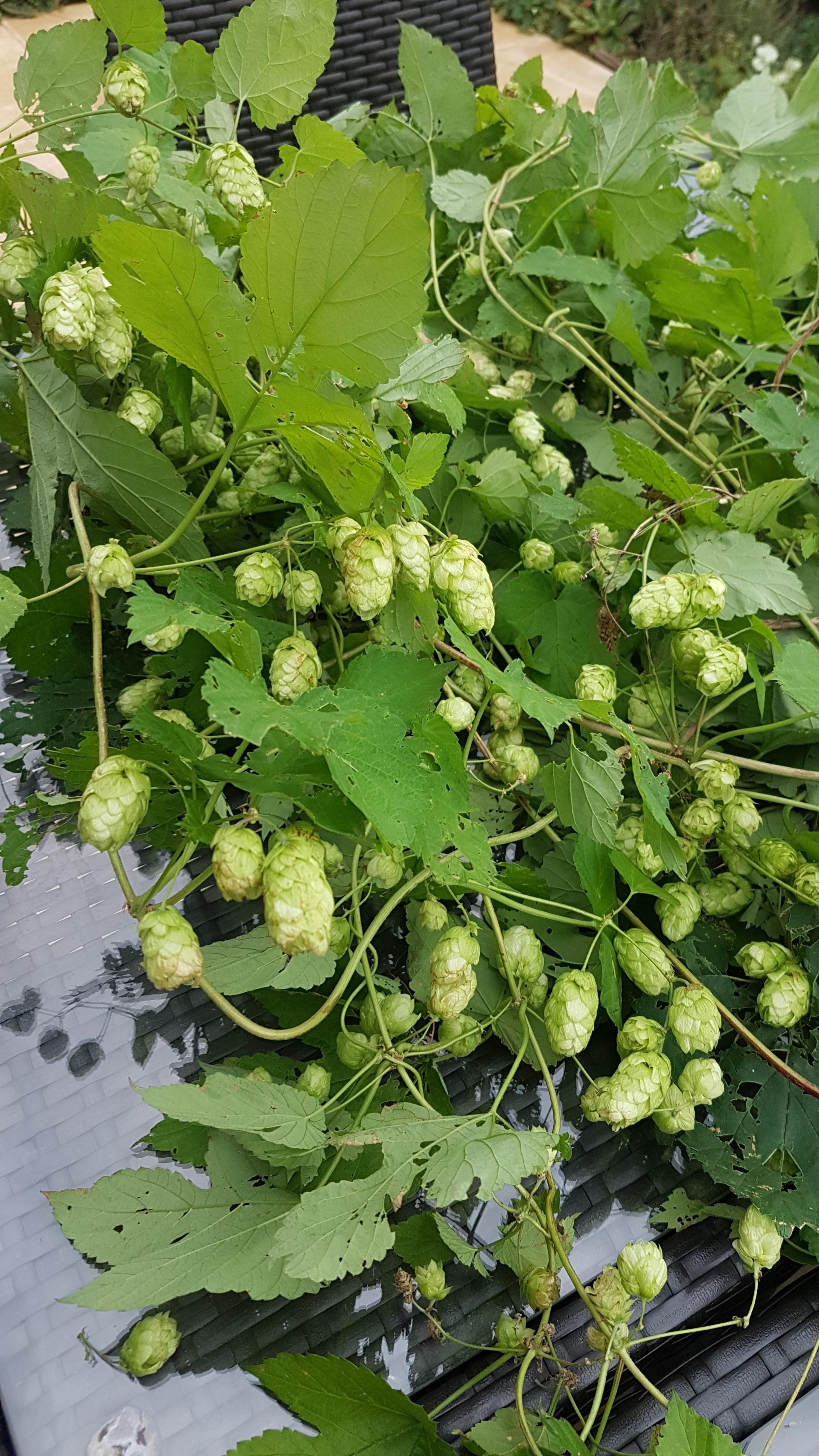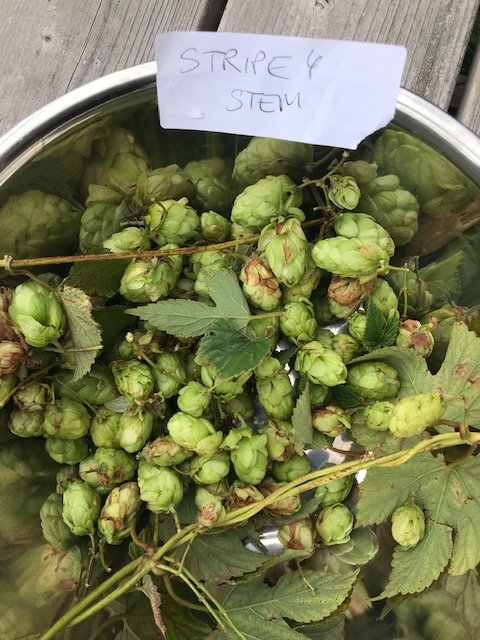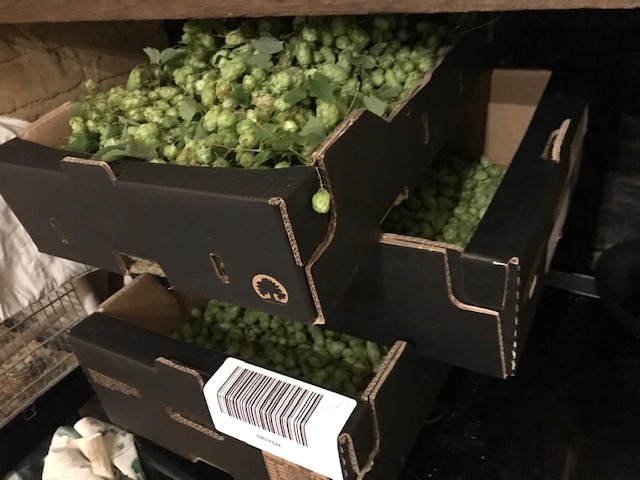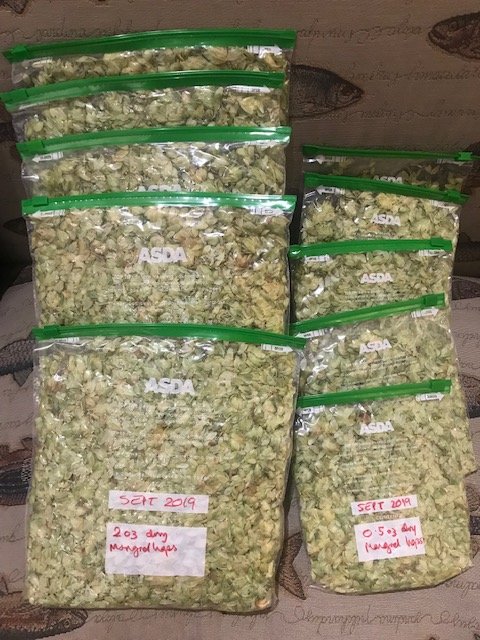Mumathomebrew
Well-Known Member
I was foraging for blackberries and sloes on a dog walk and whilst happily walking home with them, my eyes settled upon some interesting green vine like plants with bright green flakey buds. I suddenly realised they were hops, so I picked a few to bring back home and do some internet research.
With the help of school of google, I found out how to dry them. Did so overnight on the top of an aga, and have now made a tea to try to identify which sort they might be.
Rolling a fresh bud in my hands. They are very grassy, citrus, resinously green with almost a marjuana smell about them. It is quite a clean smell but in a citrussy sort of resinous olibanum way. Almost minty/citrus uplifting. The tea flavour was plain and green with a mild hint of bitterness but not harsh at all. Quite pleasantly refreshing.
The vines were sprawled sideways over a large patch of nettles so there are many more unreachable ones still there. They range from a bigger cone of about 5cm, most are about 3cm and some weeny ones of 1cm.
Any clues as to what this hop type could be? I shall make a virgin beer and try them out but will need to ask on the beginner forum about that.


With the help of school of google, I found out how to dry them. Did so overnight on the top of an aga, and have now made a tea to try to identify which sort they might be.
Rolling a fresh bud in my hands. They are very grassy, citrus, resinously green with almost a marjuana smell about them. It is quite a clean smell but in a citrussy sort of resinous olibanum way. Almost minty/citrus uplifting. The tea flavour was plain and green with a mild hint of bitterness but not harsh at all. Quite pleasantly refreshing.
The vines were sprawled sideways over a large patch of nettles so there are many more unreachable ones still there. They range from a bigger cone of about 5cm, most are about 3cm and some weeny ones of 1cm.
Any clues as to what this hop type could be? I shall make a virgin beer and try them out but will need to ask on the beginner forum about that.





